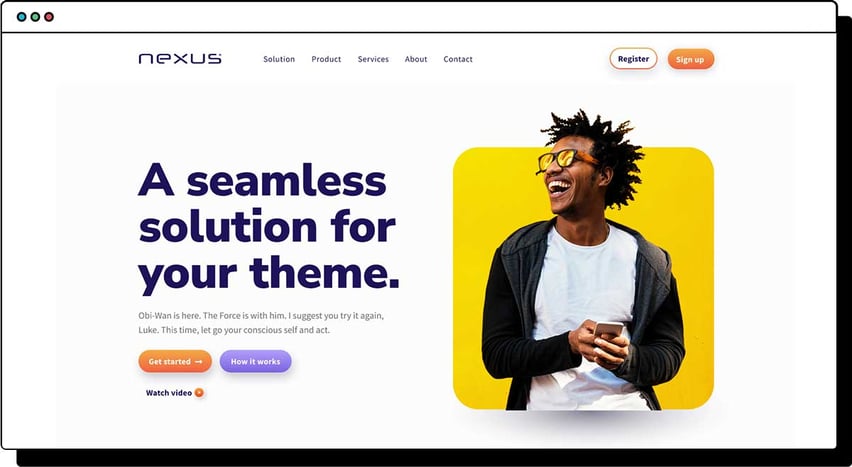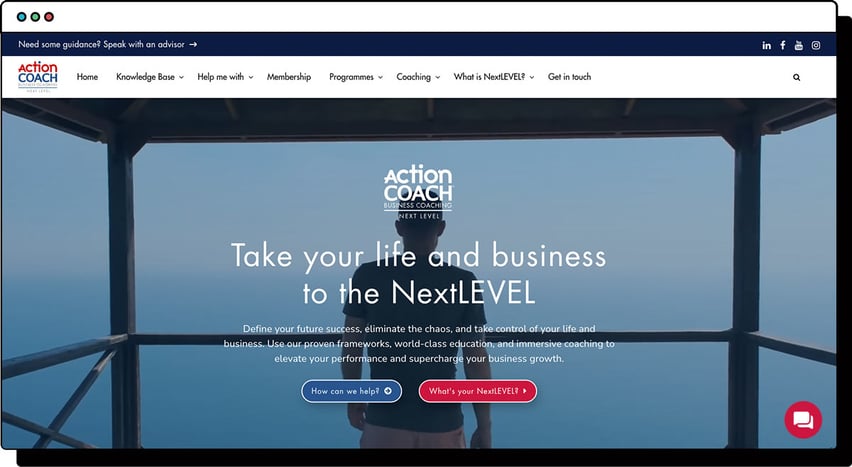Having a website is no longer a luxury - it's a necessity. But with the myriad of design options out there, how do you decide which approach is right for your business? It's like standing at a crossroads with multiple paths stretching out in front of you, each promising its own set of adventures and challenges.
For many business owners, this decision is overwhelming. After all, your website is often the first interaction potential customers have with your brand. It's your digital storefront, your online business card, your invisible salesman. And just like in the physical world, first impressions matter.
But fear not! We’re here to guide you through the maze of website design choices. Whether you're a startup on a shoestring budget or an established brand looking to revamp your online presence, understanding the different approaches to web design can make all the difference. So, let's embark on this journey together and find the perfect design path for you and your business.

The Templated Approach

Imagine walking into a store and finding a shelf full of ready-made, stylish outfits. You pick one, try it on, and voila! It fits reasonably well. That's the essence of the templated approach to website design. It's about using pre-designed website templates that are ready to wear, or in this case, ready to add your content to.
At its core, the templated approach involves leveraging pre-existing website designs. Platforms like HubSpot, Wix, Squarespace, and WordPress offer a plethora of themes that you can select, customise slightly, and launch. It's like picking a base model and then adding a few personal touches.
Pros:
- Quick Setup: One of the biggest advantages is speed. You can have your website up and running in almost no time, making it ideal for those who want to hit the ground running.
- Cost-Effective: If you're on a tighter budget, going templated can be a wallet-friendly choice. No need for hefty designer fees or extended development hours.
- User-Friendly: Most of these platforms are designed to be no-code. So, if "HTML" sounds like a foreign language to you, you'll be just fine.
- Consistent Design: With a template, you get a cohesive look and feel right off the bat. No worrying about mismatched colours or jarring layouts.
Cons:
- Limited Customisation: While you can tweak certain elements, there's a limit to how much you can change. It's a bit like buying an off-the-rack suit - it might fit well, but it won't be tailored to your exact measurements.
- Similarity: Here's the catch - since many opt for the most popular templates, there's a risk your website might look eerily similar to others out there. It's the digital equivalent of showing up to a party and spotting three others wearing your exact outfit.
- Potential Bloat: Some templates come packed with features you might never use. This can slow down your site, leading to long loading times and bad user experiences.
Best for: If you're a startup or a small business with limited resources, or if you're looking to test a new idea quickly, the templated approach might be your best bet. It's also ideal for those who don't have any specific or unique functionalities in mind and just want a solid online presence without the fuss.
The Custom Approach

Picture this: You walk into a boutique where a tailor measures you, asks about your style preferences, and crafts an outfit exclusively for you. It's unique, it's personal, and it fits like a dream. That's the custom approach to website design.
Going custom means building a website from the ground up, tailored to your specific needs and desires. It's a blank canvas waiting for your vision to come to life, without any constraints of pre-existing designs.
Pros:
- Unique Design: Your website will be one-of-a-kind. It's crafted to reflect your brand's identity, ensuring you stand out in the crowded digital landscape.
- Flexibility: With a custom site, the sky's the limit. Whether you want a specific feature, a unique user experience, or a particular integration, it's all possible.
- Optimised Performance: Since everything is built to your specifications, there's no unnecessary code or features slowing things down. Your site will be lean, mean, and optimised for speed.
Cons:
- Time-Consuming: Building a custom website takes time. Unlike the templated approach, where you can launch quickly, a custom site requires careful planning, design, and development.
- Expensive: Hiring skilled designers and developers to bring your vision to life can be a significant investment.
- Maintenance: A custom site isn't a set-it-and-forget-it deal. It'll need regular updates and maintenance, especially if you've integrated custom-coded solutions.
Best for: Brands that crave a unique digital identity should consider going custom. It's also ideal for businesses with specific functionality needs or those who want their website to grow and evolve with them. If you're looking to make a statement and have the resources, the custom route might be the way to go.
The Hybrid Approach

Stepping away from the clothing analogy, the hybrid approach is like going to one of those build-your-own-burger places. You start with a basic bun and patty, but then you get to add all your favourite toppings, sauces, and extras. It's about starting with a base and then customising it to your heart's content.
The hybrid approach is the middle ground between the templated and custom methods. You start off with a template but then integrate custom-coded features, design tweaks, or unique functionalities that elevate it from the standard.
Pros:
- Balanced Cost and Uniqueness: It's often more budget-friendly than a fully custom site, but you still get to infuse it with your own personal touch.
- Faster Deployment: Since you're starting with a foundational design, you can get your site live quicker than if you were building from scratch.
- Custom Features: While the base might be templated, the hybrid approach allows you to integrate specific features or functionalities that are crucial for your business.
Cons:
- Potential Compatibility Issues: Sometimes, custom additions might not play nicely with the original template or its updates.
- Maintenance: While it might not be as intensive as a fully custom site, a hybrid website still requires care, especially if you've added custom elements.
Best for: The hybrid approach is a blended solution, perfect for businesses that want to stand out but might not want to dedicate too much of their financial resources to a full custom build. If you're looking for a mix of efficiency and personalisation, this could be your sweet spot.
Making the Decision

So, we've explored the three different approaches to website design and now comes the big question: Which path should you take for your business?
Making this decision isn't just about aesthetics or budget; it's about aligning your choice with your business goals and future vision. Here are some factors to mull over:
- Budget: Finances will play a big role. Should you go with a custom design right now, or is it more prudent to start with a template and upgrade later?
- Timeline: Need to launch yesterday? A templated approach might be your best bet. But if you have time on your side, considering custom or hybrid options could be worthwhile.
- Unique Business Needs: Do you have specific functionalities in mind? Maybe an intricate booking system or a unique user portal? Your needs can heavily influence your design path.
- Future Scalability: Think about where you see your business in the next few years. If you anticipate significant growth or changes, ensure your chosen approach can adapt and evolve with you.
- Brand Identity: How crucial is it for your brand to stand out? If uniqueness is at the core of your business strategy, leaning towards custom or hybrid might be the way to go. There's no one-size-fits-all. It's about understanding your business's unique needs, challenges, and aspirations. It's also okay to start small and dream big. Many successful brands began with a simple templated site and evolved over time as their business grew.
At the end of the day, your website is a reflection of your business. It's your digital handshake, your online smile. So, take a moment, reflect on your goals, and choose a path that feels right. And hey, if you ever feel lost, remember we are here ready to give you guidance.

